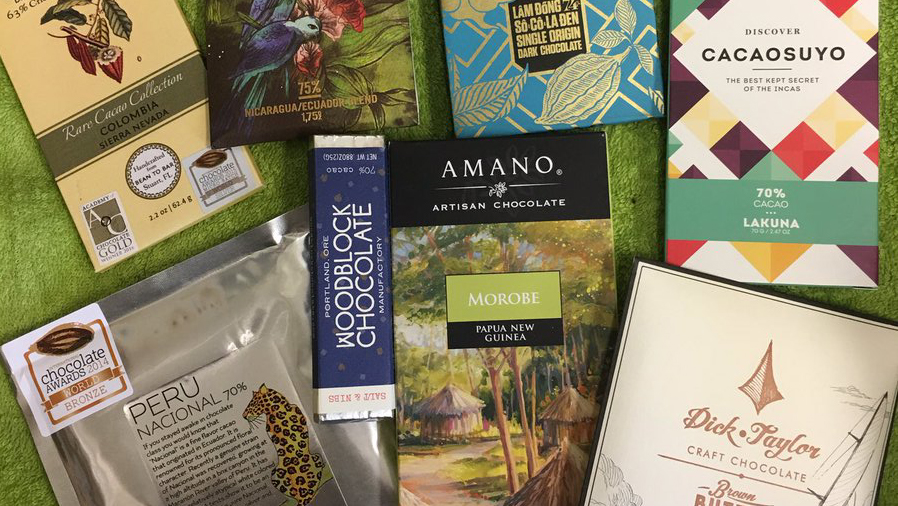Alumni
The Science of Chocolate
A new May Term course, The Science of Chocolate, taught by professor of biology Romi Burks, immersed non-science majors into the delicious science behind where chocolate comes from, how it gets its taste, and how it is manufactured and brought to market.
Open gallery

A lot of mass-marketed chocolate comes from countries and companies that tolerate child slavery while craft or artisan chocolate favors direct or fair trade relationships that benefit farmers. Through tasting and discussion, the class examined the different definitions or versions of chocolate with an emphasis on “dark(er)” chocolate that has cacao as its first ingredient. For instance, students learned that chocolate beans (or seeds) grow on trees (housed in a pod), but it takes many steps to get to what we know as chocolate flavor. Science matters to chocolate as the beans get fermented, dried and then roasted to bring out a variety of flavors (fruit, spicy, earthy, nutty, etc.) without even adding ingredients other than cacao mass and sugar.
Romi Burks, professor of biology, has been teaching an interdisciplinary chocolate-themed First-Year Seminar since 2007, but had not yet had the opportunity to add hands-on science activities. Burks shares, “I love teaching about chocolate because it provides a window into what’s happening in the world. Every subject connects - from society’s obsession with the “good” chemicals that can be found in chocolate (e.g. polyphenols) to the political unrest in Venezuela which hits chocolate farmers particularly hard, to the effects of climate change and genetic diversity on the tree itself. Furthermore, just reading a number of papers on genetic diversity also lends insight into my own research on snail diversity. I call my interest in chocolate ‘my professional hobby,’ and it’s been a great choice.”
As part of this May Term class, students visited the SRSLY chocolate production facility and made their own bean-to-bar chocolate. Based on an exercise that Burks created, the students also studied concepts of evolution using candy bars and then later learned more about the basics of DNA and how genetics relates to chocolate. One more field trip took them to Central Market to collect quantitative data on the chocolate bar collection. The students also conceived of a chocolate art project that illustrated an intersection with science. For example, a music performance major put together an ensemble piece for percussion using just the notes ACG and T (as a triangle) which represent the letters found in the molecules (i.e. nucleotides) that make up DNA.
The second half of May Term focused on a chemistry lab where students successfully extracted and quantified the number of polyphenols, a chemical group that act as antioxidants, in eight different cocoa powders. The students worked together to analyze their data and present the results as a scientific poster, mimicking the process that professionals go through when disseminating their science.
The class concludes with a written exam as well as a “practical” where each student presents a tasting of a bar they chose. Makers include Amano, Marou, Ritual, Omnom, Manoa, Castranova, and Dick Taylor.
This one-month course certainly packed a lot of science and chocolate into a short time.














